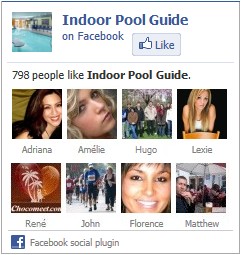
Overview
Several key areas are important here:
• Clarity
• Turbidity
• Filtration
• Backwashing
• Flocculation or coagulation.
Clarity of pool water is critical for customer safety. It should be possible to see the bottom of the pool at its deepest point. If not, there is a physical danger to anyone in distress below the water surface. Lack of clarity may also increase bather discomfort and reduce disinfection. In practice, it must be possible to see a small child on the bottom of the deepest part when the pool is being used.
Poor clarity is caused by turbidity, colloidal or particulate matter suspended in the water. It is important to establish the cause of turbidity, so that it may be dealt with directly. The most likely remedy however, will be correct filtration and backwashing, coupled with flocculation or coagulation. This will convert the
particulate and colloidal matter into filterable flocculus, or floc.
There are a number of factors to be taken into account when specifying filters. However, the baseline is that there must be enough filtration capacity, (that is, filter area), circulation rate and turnover period, to cope with the heaviest expected load. It is prudent to over-specify, rather than under-specify filtration capacity. This will allow for a future increase in patronage without loss of water quality.
Filtration Principles
In general, the greater the velocity of water through the filter, the lower the filtration efficiency. In practice, efficiency falls off rapidly at high velocities.
Sand filters are recommended for all non-domestic swimming pools. Cheaper alternatives, such as cartridge filters and pre-coat or diatomaceous earth filters demand more care and attention than sand filters. They cannot always be relied on to cope with the bathing conditions that public pools may expect at certain times.
The capacity of the filtration system should be based on expected maximum bathing load, operating 24 hours a day.
Pools will benefit greatly from the increased flexibility and the safeguards of having more than one filter. Through isolation of one or more filter units, a restricted turnover rate can enable the pool to be used during backwash, maintenance or repair. This flexibility permits and encourages a planned inspection and maintenance program, which is essential for filter efficiency.
Types of Filters
Pressure Filters
Pressure sand filters vessels are usually constructed from fibreglass, glass reinforced plastic, prefabricated mild steel or stainless steel. These may be medium and high rate, and are commonly used in conjunction with flocculants and coagulants for commercial pools and spas, as well as hotel, hydrotherapy and school pools that are subject to variable bather loading demands.
Low-Rate Filters
These may include vacuum sand, open bed gravity fed filters. Though very efficient, they are rarely utilised in indoor pools because they tend to be large and expensive. Gravity feed filter vessels are usually constructed from concrete and operate by gravity rather than pressure. They have been used in many older outdoors pools and are also used in town drinking water treatment systems
Specifications
A filter should be designed to the appropriate Australian Standards for the type of filter and material used in its construction, and it is recommended that the following quality and performance standards should be specified.
• A pressure or loss of head gauge should be fitted to indicate the operating pressure of the filter.
• An automatic air release/vacuum breaker and a safe, manually operated quick air release mechanism should be fitted to each filter.
• A flow meter should be fitted (and regularly serviced) to indicate filtration water and backwash water flow rates.
• A sight glass should be incorporated into the outlet water pipe to observe backwash effluent.
The Sand Bed
The normal grade of filter sand size for conventional pool filtration is 0.45 to 1 mm. The bed depth should be at least
0.5 m. Depths have tended to increase from 0.75 m on average up to about 1 m. A common rule of thumb is: two-thirds filter space for the media bed, leaving one-third for expansion during backwash.
Sand filters can have either single or multi-grade beds. An advantage of multigrade beds is that in the event of minor collector failure, the large-grade substrate will prevent the finer sand from entering the pool and operation will be uninterrupted. In the event of failure with single-grade media filters, collector failure will usually result in sand entering the pool. Whichever bed design is used, the specification and minimum depth of the filter sand recommended by the filter manufacturer must be maintained.
The Limits of Filtration
The average pore size of a pool sand filter is 100 microns. There is no lower limit to the size of particle that can be removed— given the many passes common in pool circulation. With the aid of a coagulant, a single pass at an appropriate flow rate can almost completely remove all suspended matter—including colour and other colloidal matter of sub-micron size.

